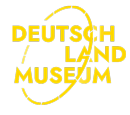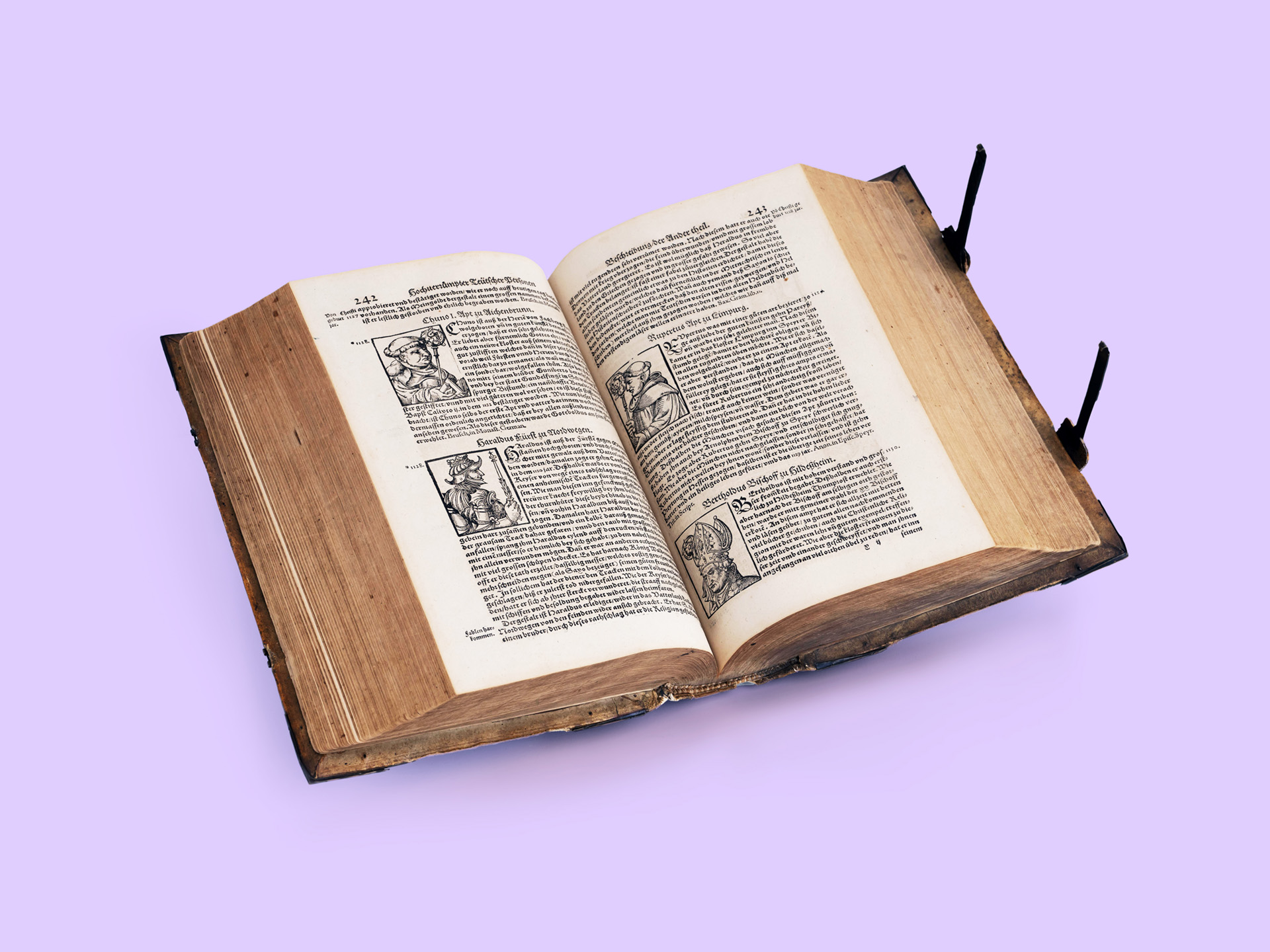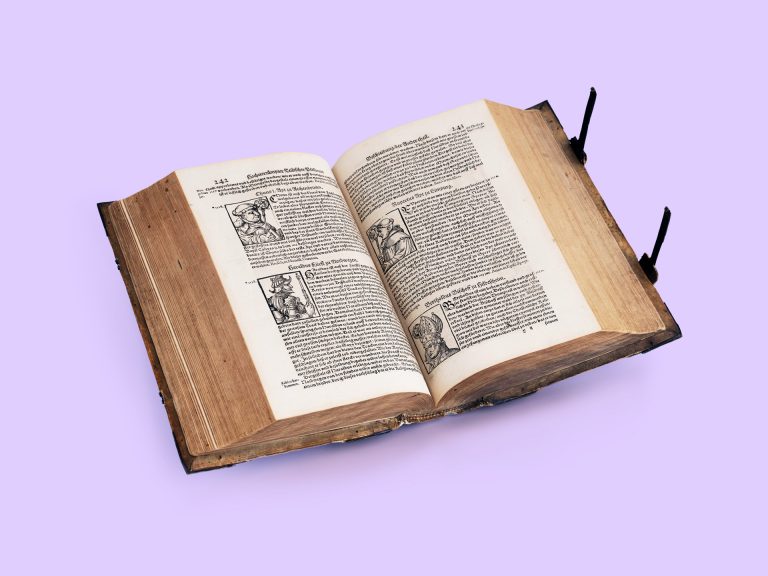A German polymath: Heinrich Pantaleon
As with many scholars of his time, Heinrich Pantaleon’s (1522-1595) work is difficult to categorize. After studying both theology and medicine, he worked as a physician, a theologian, a university lecturer in dialectics and physics and as an historian. Spending most of his life in Basel, then part of the Holy Roman Empire of the German Nation, his output included both translations and original publications.
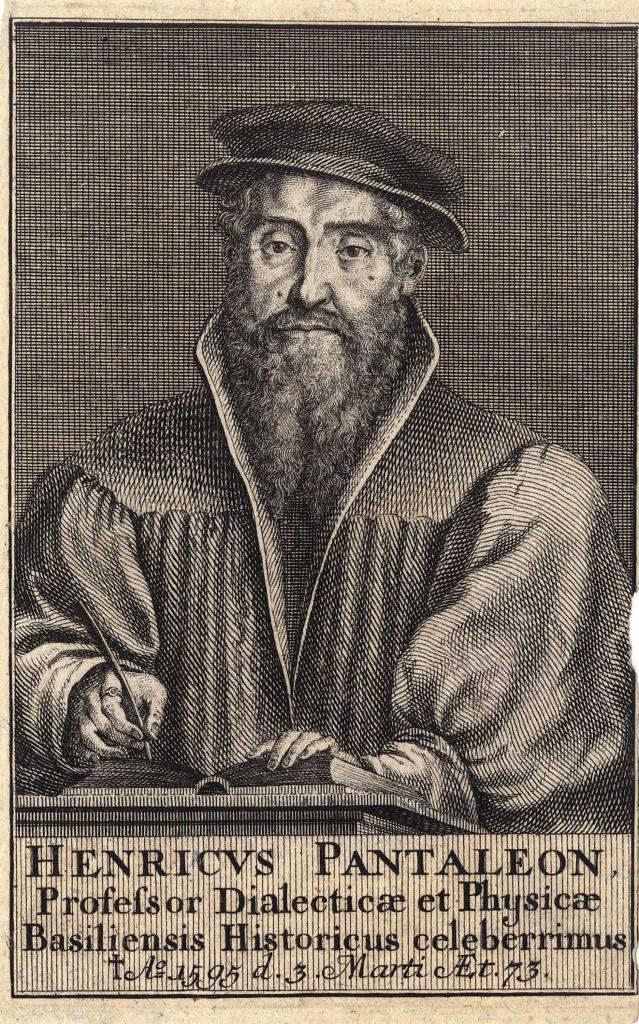
Author of Teutscher Nation Heldenbuch: the polymath Heinrich Pantaleon Engraving, Anonymous, Germany, c. 1595 (Source: The British Museum / CC BY-NC-SA 4.0)
The German Nation’s Book of Heroes was a revised and extended translation of the Latin-language work Prosopographia heroum atque illustrium virorum totius Germaniae from 1565. Considered as Pantaleon’s most important work, the book was produced between 1567 and 1570 and written “in praise of the German nation”.
The German Book of Heroes in the Deutschlandmuseum
The book on display in the Deutschlandmuseum is the first edition of the German translation. Originally published in three volumes, this copy of the Book of Heroes combines the three parts bound into a single book. Starting in antiquity, it takes the story up to the 16th century, and includes 1700 biographies.
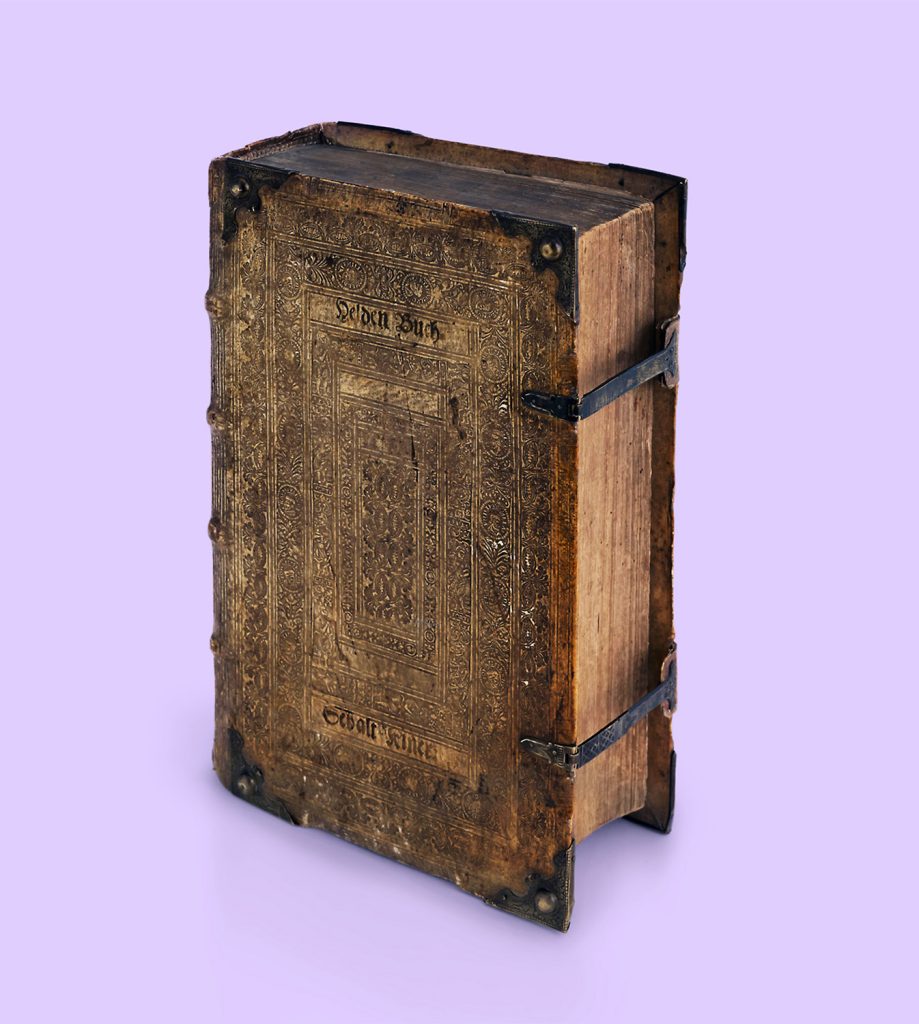
Also impressive from the outside: ornate leather binding with gold embossing Teutscher Nation Heldenbuch, Heinrich Pantaleon, 1567-70, Germany (source: Sammlung Deutschlandmuseum)
Measuring 34 x 22.5 cm and weighing just under five kilogrammes, the book is bound between wooden covers wrapped in pigskin with ornate brass corner fittings and brass clasps. The leather is decorated with numerous embossed patterns. The title and the name of the original owner, Sebalt Kiner, are embossed in gold on the front.
The book was printed in Basel by the printing company N. Brylinger Erben, owned and run by the descendants of the book printer Nicolaus Brylinger. Following the invention of the printing press by Johannes Gutenberg in the middle of the 15th century, the art of printing spread rapidly throughout the Holy Roman Empire, thereby triggering a media revolution. The high quality of the Basel printing press is evident both in the typeface, which is still easy to read today, and in the more than 1500 woodcuts that complement the texts.
Legend and fact in the German Book of Heroes
As was common practice in the 16th century, the author does not restrict himself to the presentation of verifiable facts in his depiction of historical figures. Pantaleon pursued a clear goal in his narrative, seeking to present individuals who have “adorned and made great the fatherland of the German nation”. In depicting his subjects as models of virtue and patriotism to be emulated, he sought to form and spread a German national consciousness.
Addressing not the common man, but the “princes, high knights and noblemen of the German nation” Pantaleon sought both to inform and entertain. The range of personalities that he describes is diverse and reflects a religious understanding of history. The list begins with Adam and includes Charlemagne, Martin Luther and Maximilian I. The book also includes a biography of the author himself, Heinrich Pantaleon.
Seeking to praise rather than provide reliable facts about its subjects, the first two volumes of the book are of little direct historical value. Changing tack in the last volume however, Pantaleon focusses primarily on contemporary personalities and provides details – including material from interviews – that are useful to historians today. As such, this magnificent copy of the German Book of Heroes acts both as a witness to the development of German book printing and as an important source of information.
As such, this magnificent copy of the German Book of Heroes acts both as a witness to the development of German book printing and as an important source of information.
Property information
Designation
- Datierung 1567-70
- Epochenraum The Reformation
- Kategorie Art&Culture
- Herkunft Germany
- Dimensionen 22x34x13 cm (WxHxD)
- Material leather, metal, paper
Property information
Designation
- Datierung 1567-70
- Epochenraum The Reformation
- Kategorie Art&Culture
- Herkunft Germany
- Dimensionen 22x34x13 cm (WxHxD)
- Material leather, metal, paper

Über das Deutschlandmuseum
Ein immersives und innovatives Erlebnismuseum über 2000 Jahre deutscher Geschichte
Reading tips and links
Lifesaver? The German Steel Helmet in the First World War
German Tank Museum Munster
Lifesaver? The German Steel Helmet in the First World War
German Tank Museum Munster
Share article
Other objects in this collection
Discover history

2000 years
12 epochs
1 hour
